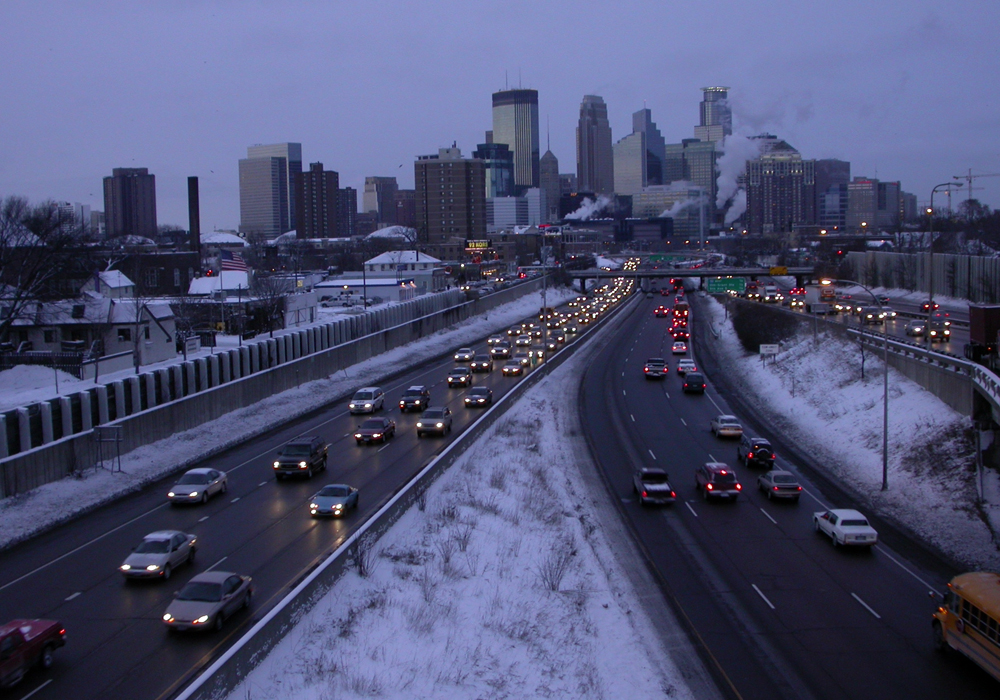Minnesota experts are already calling for billions of dollars in infrastructure improvements to pave the way for autonomous vehicles to crowd city streets — the latest state to stake a claim in the country's driverless future.
So far legislatures in 29 other states enacted laws permitting automotive companies to test self-driving cars in public — Nevada was the first to do so in 2o11 — evidence that autonomous vehicles are going to be the latest bill of goods sold to the public by car makers.
Minnesota is the latest state to get in on the action: Last month, the Department of Transportation released an 88-page strategic plan with 65 specific recommendations about how the Gopher State should update its laws, enable vehicle testing in cold-weather environments, and accommodate even more automobiles through extensive capital investments on and around their roadways in the next five years.
"Minnesota has a vested interest in promoting this technology, but the majority of testing is happening in Arizona, California, and Nevada and they don't have the same climate we do," said Kristen White ,the report's co-author and innovation director for the Minnesota DOT's Office of Connected and Automated Vehicles.
The plan notes that fleets of driverless cars won't be fully deployed anytime soon. But it directs Minnesota to begin investing in fiber-optic communication networks, reinforcing highways and bridges to support more traffic, installing traffic-signal controllers, and upgrading other signals, according to White's plan.
The plan never outlines how much these measures would cost — but they are sure to cost a bundle. And that means current Minnesotans and future generations of Gophers will have to grapple with the burden of providing resources that encourage more automobiles on their roads — with or without drivers — at the expense of pedestrians, cyclists, and mass transit users.
Of course, lots of politicians are grappling with that very question. Congress is attempting to pass self-driving car legislation which would establish federal regulations for their safety and security and usurp state laws (which AV proponents say could make it difficult to travel in driverless cars between states). There's no timeline for its passage and it's unclear whether it would have enough support to appease Senate Democrats, who blocked a prior bill because they claimed its safety, cybersecurity, and privacy provisions weren't strong enough and its effects on traffic congestion weren't specified.
Meanwhile, the automotive and technology industries have backpedaled on rolling out driverless cars because of engineering challenges — and AV watchdogs are raising alarms about the dangers of testing cars on public roads before safety protocols are in place. In one dystopian vision recently revealed in the New York Times, driverless car designers may demand cities install pedestrian gates so that walkers don't stroll out into the street willy nilly once they realize that autonomous vehicles will stop for them no matter where they are.
Most of the policy innovations regarding AV testing are happening in states such as California, Nevada, and Arizona, which are seeking to win favor with the AV industries and prepare their cities and towns for an AV-heavy future.
Minnesota is entering this high-stakes game by examining ways to integrate self-driving vehicles into its regional transit systems — for example, this fall it is launching a one-year pilot for AV shuttles that seat eight to 12 people in the Twin Cities, Duluth, Rochester, and some rural areas. It also will launch an automated bus consortium with neighboring states.
White insists that, if the state adopts any new automotive technology, it will ensure the safety of pedestrians and cyclists and prioritize their presence on the roadways — although it's unclear how that would work once the technology is deployed.
"I don't know if Minnesota needs self-driving cars until they can be safe, accessible, affordable and equitable," she said.
There are other complex challenges, both financial and technological.
A proliferation of "ghost cars" — vehicles with no one in them — could lead to more pollution and traffic congestion. The cars could bring economic opportunity to some rural communities while decimate driving job across the state. And how will an AV car handle a skid on ice?
"If we don't carefully plan for the rapid advancements in connected vehicles we will see some risks," White said. "We're trying to be very thoughtful about these things."






